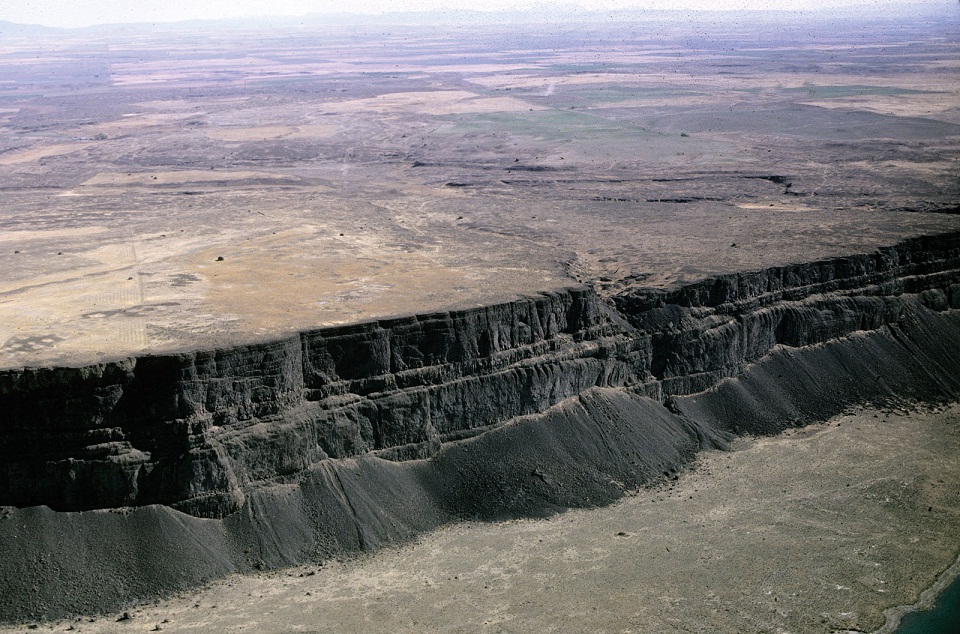
The fur trade was an important part of the economic history of North America and incorporated American Indian economies into a larger world economy. Furs were valuable, easily portable, and renewable resources. The prime furs-marten, otter, fox-were sold at high prices in the European and Chinese markets. Of less value, but still profitable, were pelts from buffalo, beaver, muskrat, and squirrel.
Today, the best-known fur trading company, and one of the world’s early transnational corporations, is the Hudson’s Bay Company (HBC). HBC was formed in 1670 when Prince Rupert, a duke, three earls, and other nobles subscribed to the Company of Adventurers of England Trading Into Hudson’s Bay. They were granted a royal charter from the English Crown which gave them a monopoly over all lands which drain into Hudson’s Bay.
Many smaller trading companies were frustrated by the HBC monopoly and in 1776 a group of “pedlars” based out of Montreal established a supply base at the western end of Lake Superior to push around the trading territory of the well-established Hudson’s Bay Company. By 1787 they had become the North West Company, an association of enterprising men agreeing among themselves to carry on the fur trade and remain unattached to any other business concern. Known as the Nor’westers, they competed vigorously with the Hudson’s Bay Company until the Crown forced the two companies to merge in 1823.
In general, the practice of the Nor’westers was to travel into fur country, often by canoe, build a trading post, and then wait for Indians to bring their furs which were to be traded for items of European manufacture. Among most Indian nations, trading networks had been traditionally established through kinship. Thus for the Nor’westers to be successful, they had to become a part of the Indian kinship network through adoption and through marriage. While marriage alliances were regarded favorably by the Indians, Christian clergy often discouraged them. However, the traders were motivated by profits rather than prophets and were not overly concerned with converting Indians to Christianity.
One of the trade items which had a great impact on the American Indian cultures was alcohol. Alcohol was, and still is, an ideal trading commodity: it is quickly and easily consumed, it is expensive, and it is addictive. The Nor’westers traded a delightful, but deadly concoction called “high wine.” This was made from a mixture of brandy, dark rum, sweet sherry, tawny port, cloves, nutmeg, and cinnamon. Water would be added according to the circumstances.
Prelude:
In 1793, a mixed group of Indians, voyageurs, Scots traders, and a large dog under the leadership of Alexander MacKenzie set off in a light canoe from the North West Company trading post at Fort Chipewyan to find a water route to the Pacific. The group crossed the mountains, then travelled down the river to the Pacific Ocean, becoming the first Europeans to cross North America by land.
MacKenzie’s book about this expedition promoted the idea that great wealth could be made in the northwest. His ideas launched the American scramble for the fur trade on the Northern Plains and in the Columbia Plateau.
The Columbia Plateau:
During the first part of the nineteenth century the Nor’westers moved into the Columbia Plateau region of eastern Washington, northern Idaho, and western Montana where they established a series of trading posts: Kootenai Post near present-day Libby, Montana (1808); Kullyspel House on the east shore of Pend Oreille Lake in present-day Idaho (1809); Saleesh House, on the Clark Fork River near present-day Thompson Falls, Montana (1809); and Spokane House in Washington (1810).
In the Plateau area, the nature of trade changed. First, the Plateau tribes had traditionally trapped small fur- bearing animals-mink, martin, fisher-for trade. However, this trapping and the trading was done by the women. When the Canadian fur traders tried to persuade the men to engage in this type of trapping, they were told that this was “women’s work.”
With regard to beaver, the best and most valuable pelts were those taken in the fall and winter. However, this conflicted with the seasonal buffalo hunts on the Plains. From the Indian perspective, obtaining subsistence for the coming year was more important than trading for a few manufactured goods.
In the Plateau, the Nor’westers as well as the HBC traders began to employ trappers to obtain the furs for the European and Chinese markets. They relied on the local tribes to trade not furs, but food and horses. The Indians found that providing the trading posts with salmon was less disruptive to their way of life and dried salmon became a staple food in the trading posts.
A Trip Down the Columbia River:
The Columbia River, which flows from British Columbia through Washington and Oregon to the Pacific Ocean, was seen by the nineteenth century fur traders-not only the Nor’westers, but also their rivals Hudson’s Bay Company and John Jacob Astor’s Pacific Fur Company-as the highway which opened up the interior and connected it with the European and Chinese markets. Fort Astoria was established near the mouth of the river by the Pacific Fur Company in 1811.
In 1811, a group of Nor’westers under the leadership of David Thompson set off from Kettle Falls, Washington, to travel down the Columbia River. At every fishing camp, Thompson made a point of stopping and introducing himself. He explained:
“My reason for putting ashore and smoking with the Natives, is to make friends with them, against my return, for in descending the current of a large River, we might pass on without much attention to them, but in returning against the current, our progress will be slow and close along the shore, and consequently very much in their power…”
The traders spent their first night with the Sanpoil. Thompson noted that these Indians subsisted mainly on salmon, roots, and berries. They did not have stone or clay pots for storage. They had no forged tools or weapons. Thompson estimates the population of the village at 546.
The next night the fur traders spent with the Nespelem, which Thompson described as prosperous, with many horses. The Nespelem performed a dance to bring the traders luck. After being blocked by Whirlpool Rapids, the Nespelem helped the traders make a two mile portage. The Nespelem reported that there are no beaver in their territory. Thompson noted that the Indians were wearing bracelets and necklaces made from dentalium shells, an indication of trade with coastal tribes. The Nespelem also grew their own tobacco.
Next the traders encountered the Methow who greeted them with a dance. Thompson noted that both the men and women joined in the smoking of the traditional Indian pipes.
The Nor’westers next encountered the Wenatchee, and Thompson noted that one of their lodges was about 80 yards long and that another was about 20 yards long. The village had a population of about 120 people. The Nor’westers noted that many of the Wenatchee wore shells in their noses and sported fine goat-hair blankets.
Near the big bend in the Columbia River, the traders camped with a group of 150 Yakama men.
At the Palouse village of Quosispah at the confluence of the Snake and Columbia Rivers, David Thompson scribbled a few lines on a sheet of paper, hoisted the Union Jack, and claimed the land for Britain.
A few miles down the Columbia River, the North West Company traders met with Cayuse chief Ollicott who showed them the Lewis and Clark medal and the American flag which he had received a few years earlier.
In Washington, David Thompson encountered a party of Nippising and Iroquois on the Columbia River. The Iroquois were Indians whose traditional homes were in Quebec and Ontario, a long distance from the Columbia River. The Indians were journeying to British Columbia to hunt moose and trap beaver. Two of the Iroquois were hired by Thompson.
A Change:
In 1815, the North West Company organized their Columbia Department to exploit the fur resources of the Columbia Plateau. Donald McKenzie was appointed as the leader of this new department. While the company had traditionally gone into Indian country and opened posts for Indian trade, McKenzie decided to change this approach. He felt that the fur trade would be more profitable if the middlemen-the Indians-were eliminated. In order to do this, the Nor’westers were to trap instead of trade. As a result, large numbers of non-Indian trappers-French-Canadian, American, English, Hawaiian-began to invade Indian country and exploit Indian resources with no concern for the Indian ownership of these resources. Also included in the trapping brigades were a number of Iroquois Indians from eastern Canada.
The trapping parties decimated Indian resources in several ways. Not only did they take the fur-bearing animals which were valuable in the foreign markets, but in order to feed themselves, they killed large numbers of deer and elk. In addition, their horses grazed on Indian land and reduced the amount of feed available for Indian horses.
The trapping parties ranged south of the Columbia River into Oregon, Idaho, and Nevada, often trapping all of the game in an area and then moving on. There was little or no concern for sustainability and some of the trappers remarked that their goal was to trap the land bare.
In 1823, the Nor’westers merged with Hudson’s Bay Company and the HBC trappers continued their efforts to trap out all of the fur bearing animals in the Plateau region.
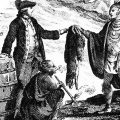
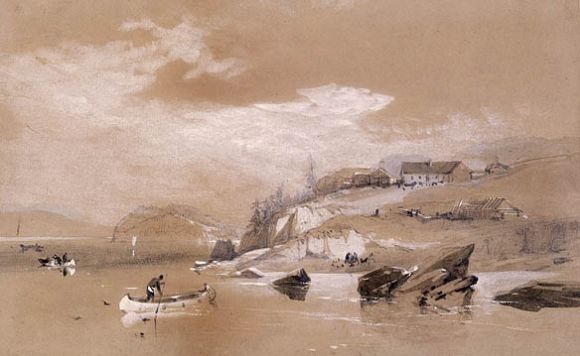
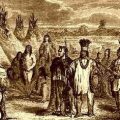
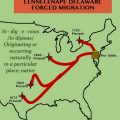
Leave a Reply